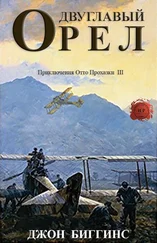By the time I arrived there in July 1916, the Isonzo Front had already claimed perhaps three hundred thousand lives in five successive battles. Yet the worst was still to come. True, the Julian Alps were not quite as high as the Dolomites. But the mountains through which the Isonzo wound its way north of Gorz were every bit as difficult and unprofitable for an attacking army. So that left only the somewhat lower-lying country to the south: the twenty or so kilometres between the Vippaco Valley and the sea, where the river curves westward then south around the edge of the Carso plateau. Even this was murderously difficult terrain for an attack (as events were to show), but it had something which—from the Italian point of view—no other sector of the front possessed: a worthwhile objective. For only twenty or so kilometres down the Adriatic shore from Monfalcone lay the city of Trieste: largest commercial port of the Austro-Hungarian Empire, home to 120,000 ethnic Italians and, ever since the 1870s, largest single item on the shopping-list of Italia irredenta.
Thus, like your own Sir Douglas Haig on the Somme that fateful summer, the Italian Commander-in-Chief Cadorna was presented with a fait accompli, locked into a situation not of his choosing: he had to attack somewhere, and the lower Isonzo happened to be both the only place where he could attack and the only one where there was some worthwhile strategic reason for doing so. His own stubborn and self-opinionated temperament did the rest. So for the next fourteen blood-soaked months, like a man compelled to keep picking at the same infected scab, Cadorna battered away obsessively at that tiny front, throwing men’s lives at it by the hundred thousand and then, when they were all dead, flinging a hundred thousand more. It was the same dismal, pitiful story as on the Western Front in those years: gains measured in metres and losses measured in tens of thousands; endless reinforcement of failure; blind stupidity mistaken for determination; utter strategic bankruptcy. In the years since, I have often heard people in this country mock the Italian Army for running away at Caporetto. To me though, who saw something of what they suffered in offensive after grinding, futile offensive, the wonder is that they stuck it as long as they did, division after division of peasant soldiers herded forward to their deaths, always without adequate artillery support, usually ill-fed and often without proper gas masks or wire cutters or even decent boots on their feet.
Individual obsession on the part of one military commander is destructive enough; but on the Isonzo Cadorna’s manic insistence on attack was mirrored in a sort of military folie a deux by his Austrian counterpart, General-Oberst Svetozar Boroevic, Freiherr von Bojna, commander of the 5th Army’s sector on the lower Isonzo. Old Boroevic was by no means the classic Habsburg military dolt: he had the reputation of being an able staff officer and was one of the very few Austrian generals to have emerged with any credit from the Galician campaign in the autumn of 1914. But he too was a remarkably stubborn man. Known to his officers as “der Bosco,” his long-suffering troops characterised him less flatteringly as “der Kroatische Dickschadel”—“the Croatian Numbskull.” The trouble with Boroevic was that whereas Cadorna had a thing about attack, he himself suffered from an equal and opposite mania for defence. Not a centimetre of ground was to be given willingly, be it never so worthless or costly to hold. And if the Italians took ground from us, why, then we were to counter-attack immediately, regardless of cost, to recapture it. It was a recipe for disaster: a long-drawn-out, miserable, grinding disaster which in the end claimed the lives (I imagine) of nearly a million men.
I suppose that for connoisseurs of human destructiveness the Isonzo Front could never quite rival the baroque horror of Verdun or the Ypres Salient; Austria and Italy were not major industrial powers, so neither was ever able to run to the extravaganzas of high explosive that were being staged in France: millions of shells raining down for months on end until the very tops of the hills were blasted down to bare rock. Likewise the two armies involved were not quite as combative as their more northerly neighbours; that is to say, while a German or French infantry battalion in 1916 would still fight on after losing nine men out of ten, its Italian and Austro-Hungarian equivalents might give up after suffering a mere seventy-five per cent casualties. Even so, for two armies conventionally dismissed by military historians as “moderate,” they contrived to do one another frightful damage.
But then, for the k.u.k. Armee the Italian Front was special: the only one where, right up until November 1918, troops from all the nationalities of the Monarchy—even ethnic Italians—would fight with equal enthusiasm against the despised “Wellischen.” Elsewhere, one could be confident that German-Austrian troops would fight pretty well on any front. As for the rest though, the Magyars would fight with some enthusiasm on the Serbian or Romanian Fronts, against their own national rivals, but showed little interest in shooting at the Russians. Likewise the Poles were only too glad to fight the hated Muscovites, but had little concern with the Balkans. Czech and Ruthene regiments were liable to be wobbly on most fronts. But in Italy all nationalities fought, if not outstandingly well, then at least with a measure of enthusiasm.
It sounds perhaps a little strange now, to speak of men being enthusiastic about the prospect of getting themselves killed. But please try to understand that it was a different, less questioning world that we lived in then. Even in the year 1916 it was scarcely possible for those of us who had been through the cadet colleges of the old Monarchy to so much as hear the word “Italien” without suddenly seeing a vision of black and yellow; without hearing the blare of bugles and the “Sommacampagna March” and the steady tramp of boots on the dusty summer roads; Novara and Custozza; Mantua-Peschiera-Verona-Legnago; “Graf Radetzky, Edler degen, schwur’s sein’ Kaisers Feind zu fegen aus der falschen Lombardei . . .” It was still an enticing prospectus, and one in which (naturally) the carnage at Magenta and Solferino tended to be somewhat played down; as did the fact that since 1849 every Austrian campaign in Italy had ended ultimately in defeat and loss of territory, even when the Whitecoats had won on the battlefield.
In those last days of July the storm was clearly about to break. The incessant banging of artillery in the distance had turned to a constant steady, air-trembling rumble as the Italian guns poured shells down upon our trenches, from Monte Sabotino across the Isonzo valley in front of Gorz, then from Monte San Michele around the western rim of the Carso to the coastal marches at Monfalcone. The gun-flashes which lit the night sky to westward had now merged into a constant flickering like that of a failing electric light bulb. Yet for us at Fliegerfeld Caprovizza it was a time of profound idleness. Apart from a few requests from Army HQ in Marburg for photo reconnaissance on the other side of the lines, Flik 19F sat twiddling its thumbs, condemned to inactivity by lack of aircraft. On the last day of the month 5th Army Staff sent a request for a long-range bombing-raid on the railway junction at Udine, the Friulian provincial capital, in the hope—highly optimistic, we all felt—of interrupting the flow of troops and munitions to the Front. A Brandenburger had just come back from repairs at the Fliegeretappenpark in Marburg, so Leutnant Szuborits and Fahnrich Teltzel and their pilots were hastily detailed to set off on a night raid. It was a fiasco, their bombs falling harmlessly in open country. They had got lost, searchlights and flak had put them off their aim when they at last found their target, and in the end the townspeople of Udine had refused to succumb to mass panic and rush out and drown themselves like lemmings in the river. Only Szuborits made it back to file a report. Teltzel and his pilot failed to return and were posted missing, a state in which (I learnt many years later) they remained until 1928, when wood-cutters discovered the wreckage of an aeroplane and a jumble of bones deep in a pine forest amid the hills north of Cormons.
Читать дальше












